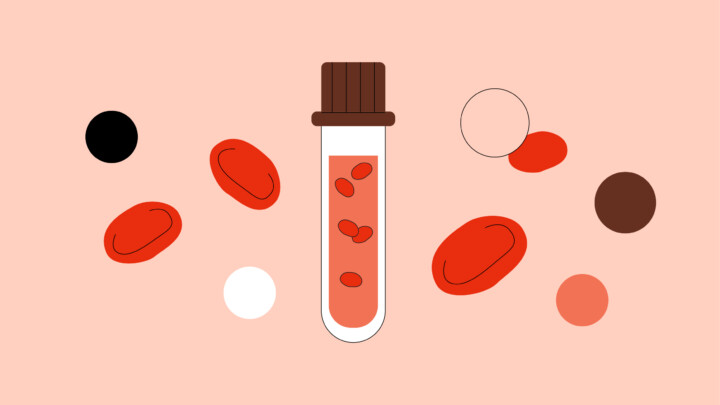
Defensive medicine is woven into daily practice for many U.S. physicians. The pattern emerges as an extra test ordered “just to be safe,” a consultation added to a routine case, or the avoidance of higher‑risk patients and procedures.
When repeated across the system, these individual choices to guard against liability accumulate into a collective habit that inflates costs, increases patient risk, and corrodes professional morale. This article defines defensive medicine clearly, distinguishes it from prudent care, and offers strategies for protecting patients and physicians alike.
What is defensive medicine?
Defensive medicine refers to clinical actions motivated more by fear of liability than by patient benefit. It generally takes two forms:
- Assurance behaviors—ordering extra tests, imaging, labs, or referrals to document that “everything was considered.
- Avoidance behaviors—refusing to accept complex patients or perform higher‑risk procedures to limit legal exposure.
By contrast, prudent care involves evidence‑based decisions: ordering a targeted MRI for new neurological deficits, following guideline‑recommended protocols, or consulting a specialist when clinically warranted. The distinction lies in intent and expected value—prudent care changes management, while defensive medicine mainly creates legal cover.
Physicians themselves often wrestle with this line. A malpractice lawyer and Sermo member commenting in a discussion on this topic noted that the term “defensive medicine” is misleading: “the defense against a negligence claim is that you acted reasonably under the circumstances. If you can cite clinical facts that match guidelines to not do a study you have met that.” In other words, guideline‑aligned restraint is not negligence—it is defensible, prudent care.
An emergency medicine physician describes the dilemma more viscerally. They explained that in the ER, minor head trauma with low probability of complications is common. If a patient demands a CT and the physician declines, any subsequent complication could be career‑ending. In practice, many feel they have “no choice but to order the damned test,” even when evidence suggests otherwise. This illustrates how patient pressure and litigation fear can override clinical judgment.
One OBGYN echoed frustration from another angle: “Patients don’t have the knowledge and understanding of all the possible outcomes that come with clinical assessment and diagnosis. We don’t have the time to explain and document all the risks and potential complications. Trial lawyers are trained to find these and then claim neglect or malpractice. Defensive medicine is here to stay.”
The immediate response from a peer was pointed: “But the point is that doing the unnecessary is not actually protective.” This exchange captures the paradox—ordering extra tests may feel safer in the moment, but legally and ethically, it is not the strongest defense. Thorough documentation of clinical reasoning is far more protective than unnecessary interventions.
According to a recent small-sample Sermo poll, physicians are nearly equally split on whether ordering testing that is not expected to be clinically useful truly protects against litigation. This divide underscores the cultural entrenchment of defensive medicine and the urgent need to clarify the boundary between prudent care and fear‑driven practice.
Defensive medicine versus prudent care
Distinguishing reasonable care from defensive practice requires a clear, reproducible standard. Prudent care is evidence‑based, aligned with guidelines, and ordered because results would change management or clarify prognosis. It relies on documentation of clinical reasoning, a clear differential diagnosis, and follow‑up plans that demonstrate patient‑centered thinking. In contrast, defensive medicine is characterized by low pre‑test probability, minimal likelihood of changing management, and a primary motivation of legal protection or documentation rather than patient benefit.
Good medicine often requires certainty thresholds and safety nets. The ethical problem arises when the balance tips toward tests and interventions whose main function is creating legal cover rather than improving patient outcomes. To illustrate, research and physician testimony highlight both the “positive” assurance behaviors and the “negative” avoidance behaviors that define defensive medicine in practice.
Positive (assurance) examples of defensive medicine:
- Ordering unnecessary lab tests or imaging for conditions that can be diagnosed clinically (e.g., CT for idiopathic facial nerve palsy despite clear exam findings).
- Requesting multiple consultations to implicate other colleagues in decision‑making, primarily to share liability.
- Performing redundant para‑clinical interventions such as repeat labs or imaging, even when prior results are sufficient.
- Over‑documenting or exaggerating patient conditions to create a defensive record.
- Scheduling extra hospitalizations or office visits that add little clinical value but provide a paper trail.
Negative (avoidance) examples of defensive medicine:
- Refusing to admit high‑risk patients for elective procedures, even when clinically indicated.
- Avoiding high‑risk surgeries (e.g., complex neurosurgical or obstetric cases) due to fear of complications and litigation.
- Exaggerating potential complications to patients and families to lower expectations and shield against complaints.
- Steering clear of emergency presentations with high mortality risk, preferring to transfer or delay care.
- Declining to perform invasive procedures in resource‑limited settings, not because of lack of skill but fear of liability.
Defensive medicine takes many forms in daily practice, and physicians themselves often acknowledge how easily it can be confused with prudent care.The challenge for physicians is recognizing when the impulse to protect themselves crosses into actions that no longer serve the patient.
As one general practitioner in Spain put it: “I agree that defensive medicine is often confused with prudent medicine. Ordering a test when there are reasonable doubts about the clinical assessment is not defensive; it’s part of responsible medical practice.” The distinction, then, is not about whether a test is ordered, but whether it is ordered for the patient’s benefit or for the physician’s legal protection.
A recent Sermo poll underscores this point: 9 out of 10 physicians agreed that the decision to order further testing should rest on whether they can document a clear clinical conclusion. In other words, documentation of reasoning—not the sheer volume of tests—is what separates prudent care from defensive practice.

How defensive medicine harms patients and healthcare
Defensive medicine carries real consequences for patients, clinicians, and health systems. It is not a harmless habit of “extra caution;” it creates measurable costs, exposes patients to unnecessary risks, and erodes trust in the physician‑patient relationship.
Economic impact
Physicians often justify defensive choices, as noted by one physician and Sermo member in the U.S., saying that “nobody ever got sued for ordering an unnecessary chest X‑ray”. The comment reflects a common mindset: ordering more feels safer than ordering less. But as one radiologist quickly countered, “The problem is when the patient gets stuck with the bill.”
National estimates in 2024 suggested defensive medicine adds between $46 and $60 billion annually to U.S. healthcare spending, a burden ultimately borne by patients, insurers, and health systems. Extra imaging and lab work may protect the physician’s peace of mind, but they drive up insurance premiums, hospital overhead, and out‑of‑pocket costs for patients. Even conservative analyses attribute billions of dollars annually to defensive practices.
Clinical risk
Beyond cost, unnecessary testing exposes patients to harm. A pediatrician explained: “A tenet of medicine is not to do a test if it doesn’t change management. Sometimes we have more results than reasons, eg genomic results of uncertain significance. If you find something incidentally you then have to treat it.” The radiologist’s response was blunt: “Medicine is a venue where ‘Seek and ye shall find’ is not actually a positive.” Together, these insights highlight the danger of incidental findings: once discovered, they often trigger cascades of interventions that may cause more harm than benefit. Imaging carries radiation exposure, labs can produce false positives, and incidental results can lead to overtreatment.
Capacity strain
Low‑value tests and consults consume finite resources. Radiology suites, labs, and specialist clinics are clogged with cases that add little clinical value, delaying access for patients who truly need those services. This inefficiency can contribute directly to clinician burnout and longer wait times.
Moral injury
The emotional toll of practicing under constant legal fear parallels second victim syndrome where physicians suffer distress after adverse events or perceived errors. Physicians who order interventions that don’t serve the patient, feel compelled to do so for legal protection. That dissonance corrodes professional satisfaction and contributes to attrition in an already strained workforce.
Why physicians practice defensive medicine
Legal anxiety is the central driver, but it operates within a network of reinforcing factors:
- Medico‑legal culture—A legal environment where adverse outcomes lead to highly publicized or punitive litigation fosters fear. These anxieties reflect broader health care law and ethics concerns that shape physician behavior across specialties.
- Institutional norms—When departments or hospitals implicitly reward “covering yourself,” clinicians adopt those behaviors.
- Incentives and systems—Fee‑for‑service payment models, variable access to timely follow‑up, and limited observation resources make ordering an extra test the path of least resistance.
- Perceived reputational risk—Beyond monetary damages, clinicians fear professional repercussions, peer review, and credentialing consequences.
Understanding these drivers helps identify where intervention is possible: not only in tort law but in clinical workflow, documentation standards, and cultural norms.
The best defense is documentation and reasoned care
Contrary to the impulse to stack tests, the most ethical and legally defensible strategy is high‑quality, contemporaneous documentation of clinical reasoning.This provides:
- Clarity on the working diagnosis and differential—Clearly state what you suspect and why.
- Rationale for testing or not testing—Explain how results would change management or why a test is deferred.
- Evidence of patient communication—Note informed consent conversations, shared decision‑making, and the patient’s values that influenced choices.
- Contingency plans—Document follow‑up instructions, red‑flag symptoms, and safety‑net strategies.
Documentation is persuasive because it shows decision‑making occurred in real time, guided by reason and standards—not reconstructed after an adverse event.
Physician perspectives on documentation
One anesthesiologist on Sermo recalled a residency case where a mother resisted a C‑section despite “very worrisome decels” during labor. The OB pleaded for hours, warning of terrible risks, and eventually secured consent for an emergency C‑section. The baby was resuscitated but suffered severe injury. Two years later, the mother sued, claiming that “if only” she had been told the dangers, she would have agreed sooner.
An OBGYN responded by emphasizing the critical role of contemporaneous notes: “I would have to wonder how thorough documentation was to demonstrate the OB’s earlier efforts. A single note at the time of C‑section may not be as convincing as several contemporaneous notes written at the time of initial recommendations—with names of witnessing nursing staff included.” They added that patients sometimes acknowledge risks of death but later claim they were unaware of the possibility of raising a severely disabled child.
Together, these accounts illustrate why documentation—not defensive testing—is the true safeguard. Multiple, detailed notes, supported by witnesses, demonstrate that informed consent was sought and risks were explained.
Practical strategies to reduce defensive medicine while managing legal risk
These strategies can protect patients and clinicians by shifting the focus from quantity of tests to quality of reasoning:
- Anchor decisions in guidelines and validated tools—Use clinical decision rules and document their application. Guideline adherence is a strong, objective justification for not ordering low‑value tests.
- Practice and document shared decision‑making—Discuss risks, benefits, and uncertainty with patients. Record their preferences and the rationale for the final plan.
- Standardize care pathways—Institutional protocols reduce variability and provide collective protection when contested decisions arise.
- Improve safety nets and follow‑up—Easy, documented access to follow‑up (return visits, phone checks, rapid‑access clinics) reduces the impulse to over‑test due to uncertainty about patient return.
- Communicate clearly in handoffs and transitions—Thorough handoffs and discharge instructions reduce misunderstandings that can escalate into legal complaints.
- Use risk management resources proactively—Consult legal or risk teams for high‑stakes cases and record those consultations in the chart.
- Teach the next generation—Normalize saying “no” to low‑value testing when evidence supports it, and model strong documentation practices.
What this means for physicians
For physicians the implications are practical and moral:
- Protecting professional integrity—Distinguishing prudent care from defensive practice preserves ethical standards and reduces moral injury.
- Improving patient care—Fewer unnecessary interventions mean fewer harms and more focused use of diagnostic resources.
- Strengthening legal defensibility—Clear documentation, guideline use, and shared decision-making form the most persuasive defense in legal settings.
- Leveraging peer support—Confidential peer discussion about borderline cases reduces isolation and improves decision quality.
- When clinicians prioritize thoughtful, documented care, they protect patients and themselves more effectively than by reflexively ordering low-value tests.
Defensive medicine is a systemic symptom of a legal and cultural environment that privileges fear over reason. It inflates costs, exposes patients to unnecessary risks, and erodes clinician wellbeing. The remedy is not more testing; it’s better thinking, better documentation, and better systems. By anchoring care in evidence, communicating transparently with patients, documenting contemporaneous reasoning, and building institutional safety nets, physicians can reduce reliance on defensive behaviors while maintaining professional protection.Sermo’s verified physician community has a unique role in this work. Peer-to-peer exchange helps clinicians refine documentation language, normalize guideline‑based refusals of low-value testing, and share pathways that balance patient safety with legal prudence. Together, physicians can shift practice culture from fear-driven habits to reasoned, ethical care—protecting patients, reducing waste, and restoring professional integrity.















